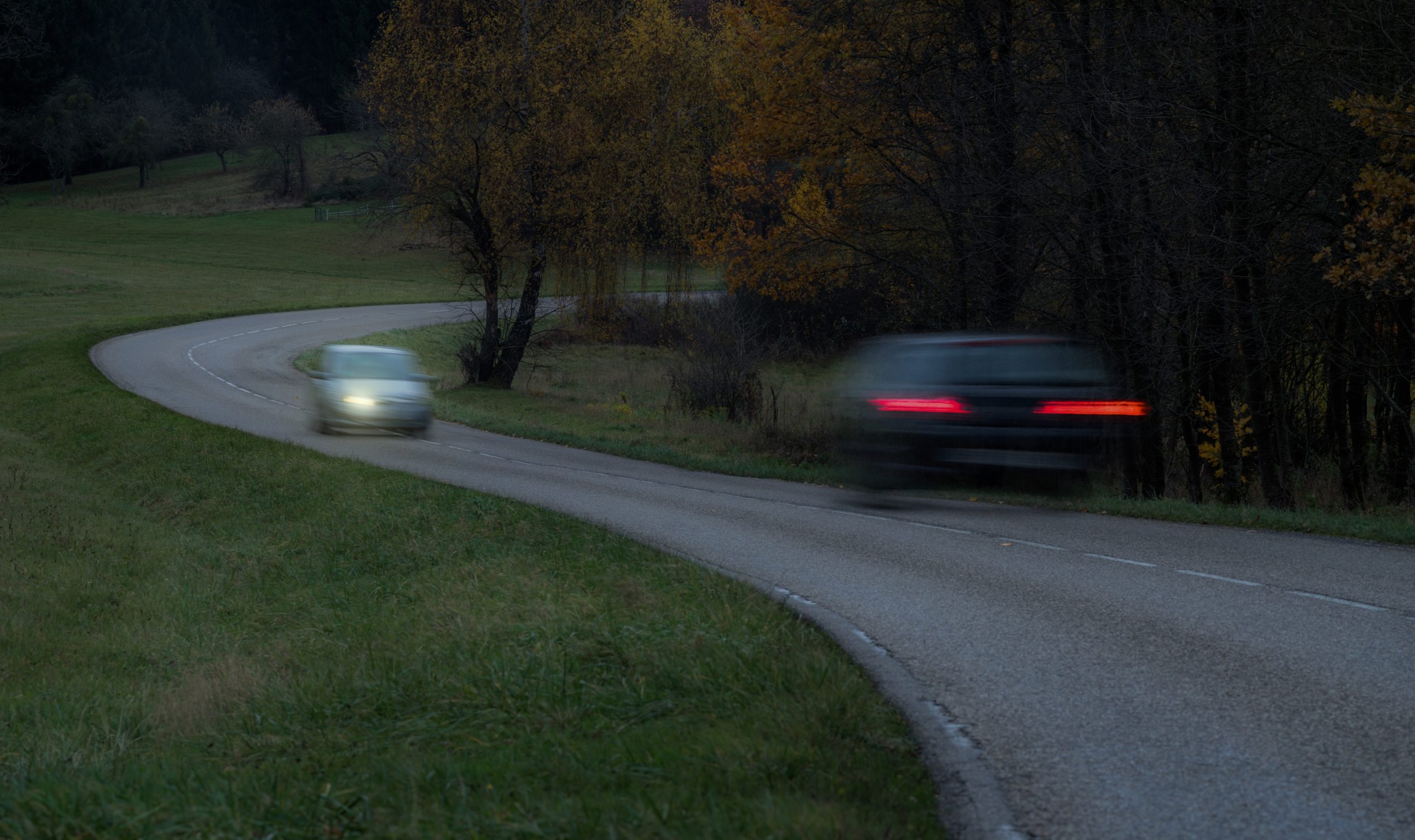
Imagine you are driving on a quiet single carriageway road. You are in a relaxed frame of mind; your speed is moderate. You then see a car coming towards you on your side of the road: it does not seem to be overtaking any other traffic, it is simply driving, apparently quite steadily, on the wrong side. What do you do?
The other driver, you will probably hope, should quickly realise their error, and move to the correct side, but what if a moment comes when you come to think that they are not going to? You swerve to your wrong side to avoid them, but just then the other driver does notice you, and also steers to the side where they should be.
Your cars collide head-on, and afterwards the other driver claims that they were on their correct side throughout, and that it was you who was driving on the wrong side. How can a collision investigator resolve this?
Nowadays we might be fortunate and have a dash-cam recording from one or both cars, or else an external CCTV recording, in which case the truth should be clear. But in the absence of these, what can be done? – it has to be said that classically this is a very difficult problem to solve. There might be tyre marks from your car to show that, as you say, you did indeed swerve to the wrong side just before the collision, but then the other driver could still maintain innocence, saying that, for some unknown reason, you simply swerved into their path (avoiding a wild animal, perhaps?).
An experienced collision investigator, given the task of determining as far as is possible what happened, will want to look at the immediate scene to find the exact positions of the cars on the road at the moment of impact (as shown by marks or gouges on the ground), and the angle of impact between the vehicles (as shown by the damage to them and, again, by marks on the ground). They will also want to consider the wider scene: what, for example, the sight lines were between the drivers as they approached one another – whether their views were restricted by bends or hill crests, and therefore how long each may have had to observe and try to avoid the other. It is possible that the investigation will lead to a conclusive determination of which driver was at fault, but equally the investigator may be able to give no more than an opinion (suitably reasoned) as to the most likely scenario.
One factor in the event which has to be handled with care is any finding of how much time and distance each driver would have had to observe the other. Suppose it emerges that you (the innocent party) would have been able to see the other car several seconds before the crash – let us say, by way of an example, you were travelling at 50 mph and could have seen it 5 seconds beforehand, when you would have been 110 metres from the collision point. A naïve argument against you would be that at that speed and in that distance, if you had reacted quite quickly (taking the commonly used figure of 1.5 seconds) you would easily have been able with heavy braking to come to a stop in about 70 metres, thereby suggesting that you were at least contributorily negligent in what happened. However, studies of the behaviour of drivers who are confronted with a vehicle which is off-course and set to collide with them show that they take a long time to react – perhaps 3.5 seconds – for the reason that they have difficulty deciding the best course of action: will the offending driver correct their course, in which case I should do nothing, or will they continue as is, in which case I am going to have to swerve and/or brake? (These studies were conducted in driving simulators)*.
These cases, then, are often very difficult, but there is a bright hope for the future. Event Data Recorders (EDRs) are increasingly becoming accessible and, provided the crash was severe enough to trigger (or almost trigger) the deployment of the airbags or seat belt pretensioners, they will show (depending on the model of vehicle) whether the driver or drivers in question steered sharply just before the collision. In the example here, the EDRs would be expected to show that both drivers steered towards the side where the crash happened just before the event, making it clear which side of the road they had previously been on.
TRL experts are, of course, able to interpret such scene data as there might be, analyse CCTV recordings, and download and interpret EDR recordings.
*P Handcock & S DeRidder, Behavioural accident avoidance science: Understanding response in collision incipient conditions. (2003) Ergonomics 46(12):1111-35 doi:10.1080/0014013031000136386
Author: Richard Lambourn – Principal Consultant






